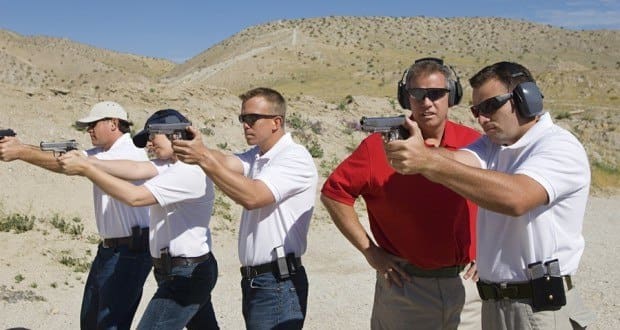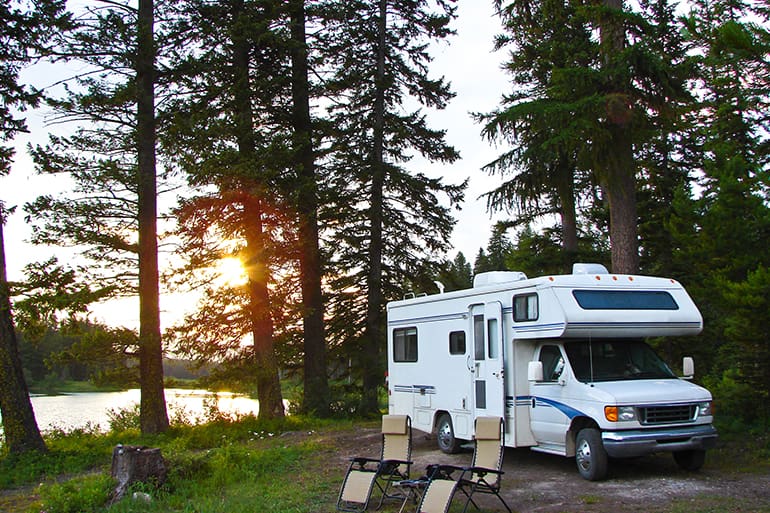By Sarah Jane Jacob via wideopenspaces.com
Dry fire practice. We all know it’s an important training for competition or self defense. And it seems not a day goes by without a reminder of that fact from a shooting expert. Or ten. More to the point, if you’re not lucky enough to have the time, access or money to shoot more than once or twice a week, then you’re going to have to get some practice in at home in order to improve. Sure, it’s nowhere near as fun as live fire, but the benefits of dry fire practice have been proven time and again . . .
Snap caps are a great tool for practicing almost all the same drills you can do in a live fire session, and offer many benefits over dry firing on an empty chamber.
Here’s our top 10 reasons why snap caps should be your new best friend.
1. Damage
You can actually damage some firearms if you fire them on an empty chamber. We’re talking mainly rimfire guns here, but if you’re in doubt, your user manual will tell you if that model isn’t safe to dry fire. Using a snap cap instead will prevent deformation of the edge of the chamber in these guns.
2. Practice loading
You can practice loading and unloading ammunition to your heart’s content. In most cases, you’re going to want to buy a few pairs, even if you’re using a side-by-side or under/over shotgun – so you can practice grabbing them out of your belt and ejecting them afterwards.
3. Make it last
Snap caps cushion the firing pin and prevent deformation and wear. This is particularly relevant for older firearms, as the materials used are not always as strong as in modern firearms.
4. Clearing jams
You can use them to practice handling misfires and jams.
5. Money savers
You’ll save heaps on ammo by making dry fire practice part of your weekly shooting routine.
6. Trigger work
Use them to identify weaknesses in trigger technique. A good drill to try is to load a snap cap in with your usual rounds while at the range. You will quickly discover how smooth your trigger press is when you do this!
7. Wear and tear
Longevity – snap caps are superior to just using spent cases, as the primer will often get punched out of the case after only a few hits. Consider choosing snap cap models that have an allen key adjustment on the spring. As the repeated strikes of the firing pin begin to wear down the “primer”, you can adjust the spring so it becomes flush with the case again.
8. Help beginners
If you have rimfire guns that you regularly use to instruct new shooters, you can protect them against accidental dry fire by nervous noobs, by popping in snap cap while you’re going through the basics, prior to live fire practice.
9. Insurance policy
For the reasons stated above, they’re cheap insurance for your gun.
10. Do what you love
It’s an excuse to go to the gun shop! Need I say more?
Now, if they would just release a snap cap that makes a “pew” noise when I press the trigger…





This all sounds terribly dangerous, besides Obama is really mad this time and says we need to get rid of all the guns. (Except for his security detail) And, he means business this time
So you guys quit glorifying guns and turn them in to the gubment cuz they know what’s best for us, mmmK?
Dry fire is good but snap caps are unnessisary with modern guns.
I’ve heard both sides of this argument and am not sure quite what to think about it. To be on the safe side, I use the snap caps. I have several revolvers with hammer mounted firing pins that I am particularly careful not to dry fire without the caps (along with the rimfires). The Glocks and whatnot, I don’t really worry about. You have to dry fire to break them down anyway. It must be ok to dry fire them.
Have your partner randomly mix in a few snap caps in with mostly live rounds in your magazine. At the range, proceed to target practice as usual. You’ll get great practice clearing surprise failures to fire, sometimes multiple in a row. That’s practice that could save your life. Dry firing cannot duplicate this drill.
Plus you’ll get dead on proof that it’s your flinching in anticipation of recoil and report, not those two themselves, that is jerking your shot off target. Dry firing can’t do that. Only snap caps among live rounds can make it real.
I should have read the other replies before I posted mine. I concur.
Or you can just use that Tula brass-cased stuff that comes in the round carton. You’ll get more experience with hard primers and squibs than you would with your way. lol
100% agree. Snap caps are not needed on non-rimfire guns. Why bother dry firing rimfire guns anyhow?
IMHO dry firing really helps with pistols, not so much with rifles. I have dry fired my GLOCK’s thousands upon thousands of times with out anything in them. They work just fine. I do dry fire my AR’s but not any where near what I do my pistols.
Name me a better way to simulate a misfire in a semi-auto.
The snap caps I’ve seen were ridiculously expense for what amounts to a chunk of aluminum with a piece of silicone rubber where the primer would be.
If you reload, you can create dummy rounds easy enough. I make mine using nickel plated brass so they’re easy to identify.
They do seem overpriced for what you get. This is especially the case with the shotgun and center fire rifle snap caps that come in packages of two. Two just isn’t enough. At least the handgun snap caps come in packages of 5-6. I use my .38 snap caps quit a bit for trigger control practice while watching TV. The 12 gauge snap caps are also good for practicing reloads with tube fed pumps.
I know the caps you’re talking of, and yes, they’re too expensive for what you get.
The caps I use in gunsmithing are plastic, with a metallic primer button that is over a coil spring. I don’t cycle them through guns that often, but for checking trigger pulls and such? Just the ticket.
Would you have a name or link on them?
Brand name is Tipton Snap Caps, I buy mine on Amazon but just do search. They are expensive but also the best quality of the bunch.
I use snap caps with my rem700.
I wouldn’t dry fire any .22 without them..
Most modern pistols are fine to dry fire.
I’d use pistol caps as dummy’s randomly stuffed in a live mag as practice though.
The manual for my Ruger SR22 states that it is ok to dryfire it. This shocked me for a .22, and I still try not to do it.
Some .22’s have firing pins that are limited in travel, so the nose of the firing pin won’t hit the breech face.
The #1 issue for dry firing rimfires is that the face of the firing pin can get peened out if the firing pin isn’t retained in the bolt to prevent impact of the firing pin face against the breech face. That’s not good. I’ve dealt with a few .22’s where I’ve had to stone off the peening in order to remove the firing pin.
I use them all the time to practice reloads and failure drills
I also sneak them into students mags without them knowing to help with flinching.
My main use for snap caps is that I randomly mix them into my practice magazines. Great for training out finches or recoil anticipation, also malfunction clearing.
Yep when I hadn’t shot a gun in 40 years I educated myself and got snap caps. A-Zoom. And that is one big reason I got 3 different Taurus’ and a KeltecPF9 to all run perfectly. Literally zero malfunctions in thousands of rounds. I’m not making them and have no problem paying 10bucks for 5 or 6. They last practically forever. I agree with every point mentioned(no experience in rimfires)…breaking news! Sheriff Clarke just did a great pro-gun rebuttal on CBS evening snooze.
I started back in July using them. What a surprise when the gun does not go bang at the range, when I mixed them in my magazines. They are a great way to practice a real malfunction at a live fire practice.
Just remember safety. Always keep the snap caps separate from your ammo when in storage.
What timing. My snap caps just arrived today.
I like snap caps, but bb and airsoft guns sure are cheap, and work great anywhere. Airsofts work in the living room. Now, ball games aren’t a complete waste of time.
I’ve a North American Arms .380 Guardian and the owner manual states no dry firing. It’s made with high quality materials. I’ve no idea why no dry firing is allowed. I accidentally dry fire it at the range sometimes when practicing because I don’t always count my expended rounds correctly. I worry about the consequences. I wish I knew what the danger is.
5 & 6 are my primary reasons, and I guess eight. Snap caps are a great way of teaching a newb safe handling and basic technique, while easing any fears (on either party’s part).
When I bought my new 442 some years ago(a lot of my guns were bought used) the doa was a bit stiff.
Snap caps, the plastic ones with inner springs, and hours of dry firing in the evenings smoothed that machine right up.
Did I need snap caps? Maybe not. But its cheap insurance, so why not.
Shooting once or twice per weeks, yikes! I can afford to shoot once or twice per month, time and money. Am I wasting my time? Is the ideal frequency more than once or twice per week?
There isn’t an ideal frequency and you are most certainly not wasting your time.
There’s actually quite a bit you can do at home without live rounds. For example: Practice drawing from your holster under different scenarios- while crouching, using your weak hand, etc. until it’s second nature.
A real life DGU won’t be under range-style conditions, it’ll be something where you are under stress, possibly partially incapacitated or using one arm to shove your attacker away. Can you draw reliably with your weak hand while laying on the holster side? Not as easy as it looks 🙂
I spent weeks with my speedloaders until I could reload my revolver in 2-3 seconds without looking. All those oddball skills might come in handy one day. Probably more so than the ability to put a 3″ group on paper at 25 yards.
Thanks for the idea to load some snap caps with live rounds for training. Hadn’t thought of that.
I have a 380 LCP an have used snap caps inside as a trigger refresher. An to keep in practice.
One tip I heard I use is to load my mag with snap caps, an say no live ammis hoo. Then firearm hot when done to remind myself it has live ammo and put it up. An not mess with it at all for a while to not make a mistake… then check it again an say aloud after my check if it Is hot or not…
yeah i also dont see the point in snap caps unless its a rimfire. throwing them in with the live rounds at the range is a good idea but at home i just dont see the benefit.
Comments are closed.